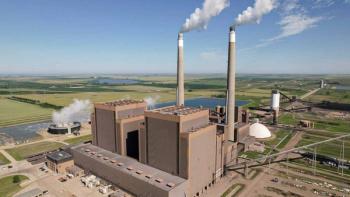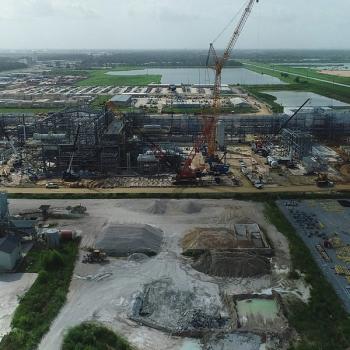
Best practices for reducing compressor noise
In compressor installations, noise comes from the compressors, the compressor accessories and extraneous equipment. It is amplified by the reflective surfaces in the facility. Unfortunately, sound levels are often neglected during the procurement process. Although post-construction sound treatment is possible, it is also expensive. Some best practices if followed during design and installation can help reduce compressor noise.
Below are excerpts from the paper, "Guidelines for reducing the noise level of a centrifugal air compressor installation" by John Badini and Paul A Brown of FS-Elliott Co at the 40th Turbomachinery Symposium in Houston.
The local sound level of a compressor installation is increased when multiple units are placed together. For lowest sound levels, compressors should be located well away from other compressors and other sound emitting equipment. Two compressors rated for 85 dBA installed within close proximity of each other will have a combined level of approximately 88 dBA when measured between the compressors.All piping connected to the inlet and discharge of the compressor should be sized to minimize the air velocity. A good rule of thumb is to keep the inlet piping diameter the same as the compressor inlet pipe size and discharge piping line size the same size or larger than the compressor discharge connection. Another rule of thumb for keeping the noise generated from air flow to a reasonable level is to keep the air velocity below 150 ft/second. This is accomplished by sizing the piping accordingly.
Immediately after the unloading valve, the pipe diameter should be increased to that of the discharge silencer inlet flange size which is typically larger than the compressor discharge pipe size and unloading valve discharge line size. All inlet, discharge, and unloading piping, expansion joints, and valves should be treated with acoustic insulation and metallic lagging.
The insulation selection and installation should follow the guidelines of ISO 15665 or an equivalent national standard. Condensate drain lines should be piped to an enclosed or otherwise silenced sump. Both condensate drain traps and notched valves should be equipped with drain mufflers. All piping associated with the drain lines should be treated with acoustic insulation and metal lagging.
For best acoustic performance, the inlet filter silencer and unloading silencer should be installed outdoors. The inlet filter silencer and discharge silencer exhaust should be mounted at an elevation such that they are well away from the compressor and normal personnel access areas. They should be mounted above adjacent buildings, walls, or other equipment to prevent reflection of the sound.
The exhaust end of the discharge silencer should be oriented in a direction that is free from any reflective surfaces. Keep the discharge 3 – 5 meters above personnel areas. The silencer should never be installed with the silencer discharge pointed vertically downward.
In lieu of bolting the compressor base to the floor, vibration isolation mounts can be used. These mounts need to be selected such that they isolate the driver running speed frequency from being transmitted into the floor, which could excite structural resonances.
Special attention should be given to the compressor foundation. The compressor foundation should be designed to avoid resonant running speed frequencies of the driver. (50 or 60 Hz). The foundation resonant frequency should be designed for a minimum separation margin of 20 % above or below the primary driver running speed frequency.
There should be similar separation margins with up to the fourth harmonic of the driver primary running speed frequency. A foundation resonant frequency above the fundamental driver speed of the compressor is preferred. The foundation should rest entirely on natural rock or entirely on solid earth and arranged so that outside vibration are not transmitted to it. Where foundations must be supported by floor beams, a vibration dampening material should be installed between the beams and foundation.
Precautions must be taken with regard to outdoor installations that incorporate a sun/weather roof installed over the compressor. Normal building roof height is recommended to allow for maintenance of the compressor. Metal roof support columns should incorporate vibration isolation pads for the prevention of structural resonance induced by equipment operation. The roof interior will require acoustic treatment. Acoustic materials rated for outdoor environment should be used and selected for the best noise absorption for the frequencies generated by the high speed running components of the compressor. Compressor indoor installations require the building to be constructed such that sound reverberation is limited.
Newsletter
Power your knowledge with the latest in turbine technology, engineering advances, and energy solutions—subscribe to Turbomachinery International today.




